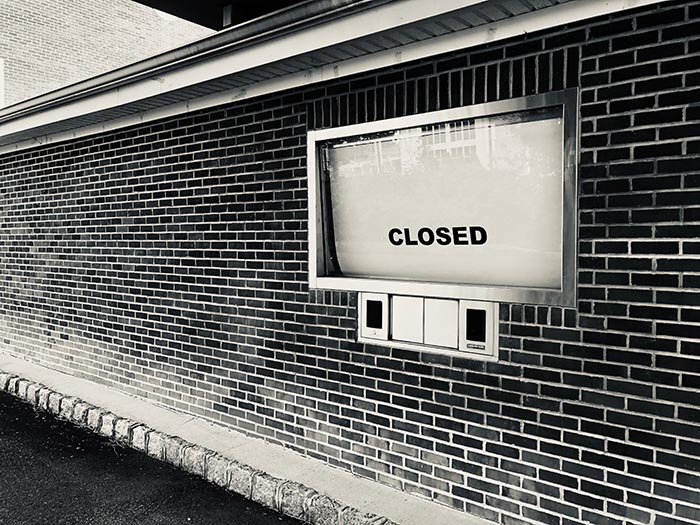Higher Education
Hazing Risks

Hazing is strictly prohibited on virtually all college campuses, yet it still happens. And it can still tragically lead to death.
More than half of college students involved in clubs, teams and organizations experience hazing, according to Stop Hazing, a nonprofit that serves as a resource for hazing research and prevention.
Its survey of 11,000 college students, in conjunction with The North American Interfraternal Foundation, found that alcohol consumption, humiliation, isolation, sleep-deprivation and sex acts are common hazing practices across all student groups.

John McLaughlin, managing director, higher education practice, Arthur J. Gallagher Risk Management
“Any college or university that has a large Greek population or athletic teams is concerned about hazing practices, which can also occur throughout the campus, including in marching bands,” said John McLaughlin, managing director, higher education practice at Arthur J. Gallagher Risk Management in Itasca, Ill.
“Universities have been very strident and specific about prohibiting hazing in any form on campus,” he said, as do the organizations themselves.
While fraternities seem to be most targeted in discussions about hazing, the practice is by no means limited to Greek life.
In 2011, Florida A&M Marching Band member Robert Champion was beaten to death in a hazing incident.
According to a 2014 research study published in the “Journal of Research in Music Education,” nearly 30 percent of marching band members responding to an online questionnaire indicated they observed some form of hazing in their marching band.
The most common acts involved public verbal humiliation or degradation. Most went unreported.
Universities have strict policies prohibiting hazing, and virtually all provide training for students during orientation, McLaughlin said. Many organizations provide additional training to students who are members of Greek organizations.
“There are many creative steps to be more engaged with the Greek organizations, including requiring live-in adults to supervise students in Greek housing,” he said.
The most common acts involved public verbal humiliation or degradation. Most went unreported.
By and large, universities are covered under their insurance policies if they are named in suits alleging failure to supervise university organizations, or failing to take appropriate action to prevent hazing, McLaughlin said.
In addition, if hazing is done by a university employee, such as athletic coaches, the institution would be protected under their policy, but there may be limited coverage for the employee.
In addition to communicating to freshman at orientation, many institutions reinforce the perils of hazing to upper classmen, as well as to the advisers of Greek organizations who are expected to look out for hazing, said Richard Vohden, national education practice leader at Marsh Risk Consulting in Morristown, N.J.
“There is zero tolerance for any kind of hazing,” Vohden said. “Even keeping pledges up past 2 a.m. in the morning or scavenger hunts where someone else’s personal property can be taken are prohibited activities.”
Many institutions also make sure to communicate to organizations that hazing is considered a criminal office in 44 states.
“For example, a pledge died due to hazing at a New York City university, and members of that fraternity were indicted for murder,” Vohden said.
In that case, five members of Baruch College chapter of the Pi Delta Psi fraternity in September 2015 were charged of third-degree murder, nearly two years after the death of Chun Hsien Deng, who was seeking to join the fraternity and was fatally injured during a hazing event.
Deng was blindfolded and forced to wear a backpack filled with sand while taking blows from fraternity members as he tried to cross a frozen yard during a weekend retreat in the Poconos, according to press reports.
He was knocked unconscious and carried inside, but instead of immediately seeking help, the fraternity members used their cellphones for searches using phrases like “concussion can’t wake up,” and called a national fraternity leader, who is accused of telling them to hide any possessions identifying the fraternity.
An hour passed before fraternity members drove Deng to the hospital, where he died.
In all, 37 members of the fraternity were criminally charged, and the national fraternity itself also faces criminal charges, including murder.

Leta Finch, national leader higher, education practice, Aon Risk Solutions
“Schools have done a good job of trying to prevent hazing, but more recently school and Greek organizations have become much more scrutinized,” said Mark Turkalo, national education and public entity placement leader at Marsh in New York City.
“Because of the increased awareness and exposure to hazing, some are being told by their carrier that they would no longer be insured and to find coverage elsewhere.”
Insurance is becoming a lot more difficult for Greek organizations to obtain, Turkalo said. Hazing is an exclusion and retentions continue to rise.
A university’s influence in mitigating hazing depends on the relationship between the institution and the organization, said Leta Finch, national leader higher, education practice at Aon Risk Solutions in Burlington, Vt.
It is more difficult for institutions when they maintain an arm’s length relationship, she said. If there is a close relationship, the university can be involved in establishing policies and inspecting housing facilities.
“For those schools that have banned Greeks, in some cases there are underground Greek societies that have been established,” Finch said. “Schools can’t prevent students forming these organizations, though sometimes these underground Greeks have caused hazing injuries that have resulted in death.”










